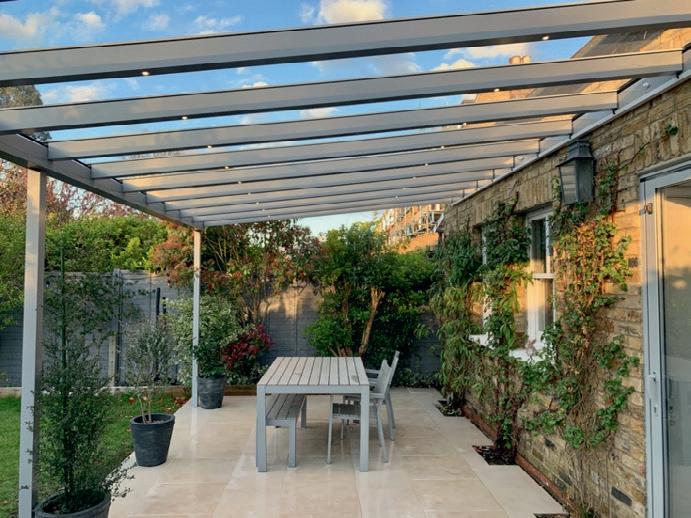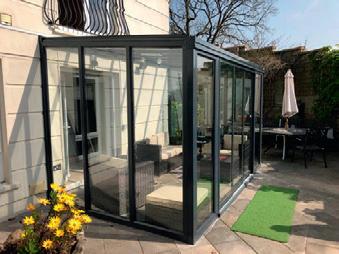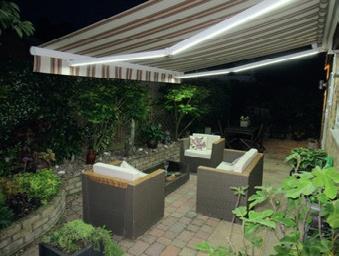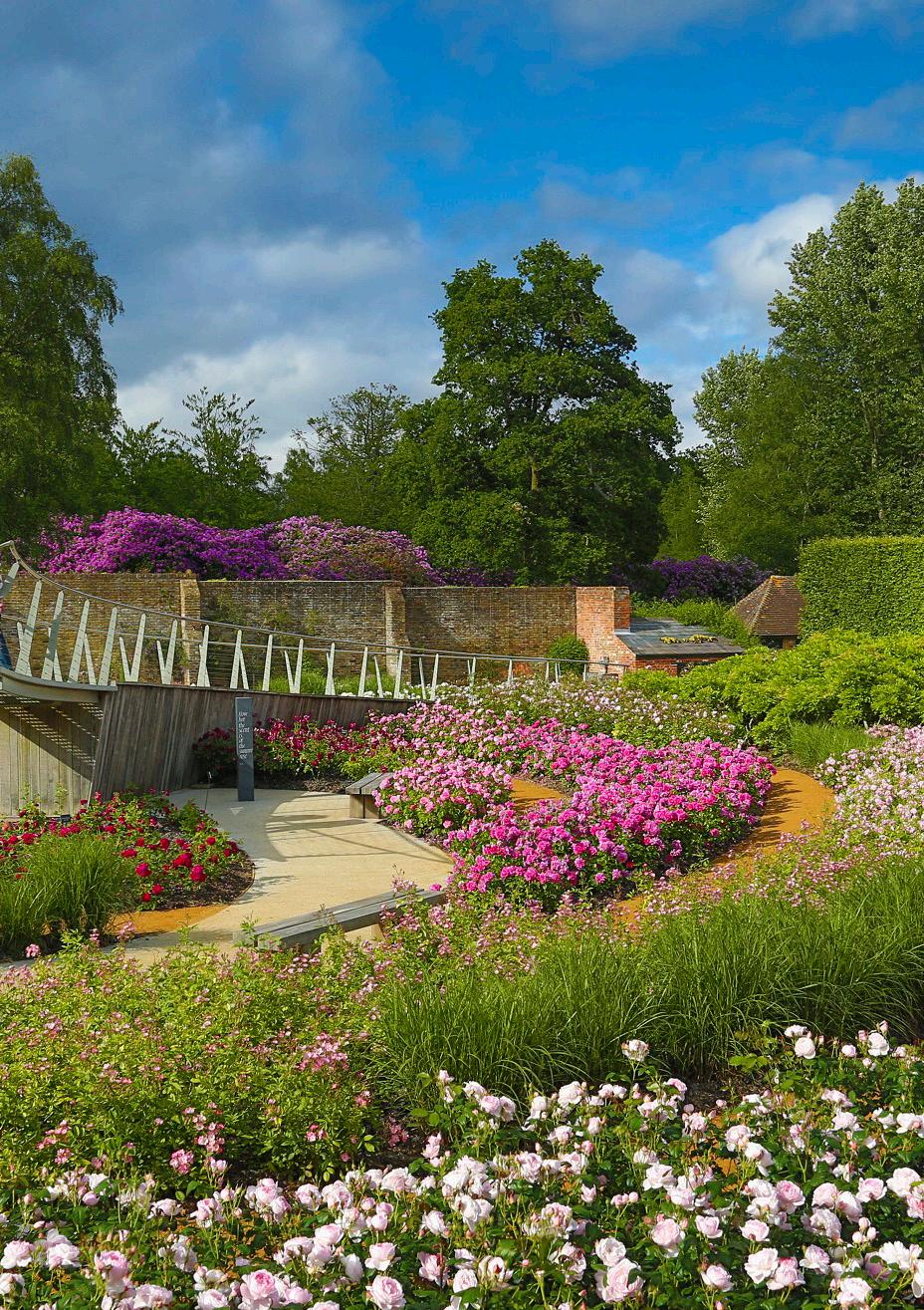
2 minute read
The Savill Garden of Windsor Great Park
The Savill Garden is a 35-acre haven of gardens, woodland and seasonal displays. Commissioned by George V and created by Eric Savill in 1932, this special place has delighted nature lovers, photographers, friends and families.
Generations of plant-hunters have brought back numerous specimens to be nurtured here. From the Himalayan flowers of the Winter Beds to the fragrant summer roses. Whenever you visit, there will always be something special to see.
Advertisement
“The Garden in the summer is a continuous delight, with spectacular shows of colour throughout the themed areas.”
John Anderson, Keeper of the Gardens
In June, the borders are a wonderful display of seasonality with oldfashioned scented French musk roses inter-planted with a wide range of shrubs and perennials.
The Dry Garden, the first of its kind in the UK has been planted with a Mediterranean feel including great swathes of South African Angel’s Fishing Rods, many of which are noted for their silver foliage and herbal scents. This part of the Garden is definitely one for the ‘water wise’ to take inspiration.
Lose yourself amongst the many delicate soothing colours of the beautifully designed Golden Jubilee Garden, designed for the 50th anniversary of the accession of Queen Elizabeth II in 2002.
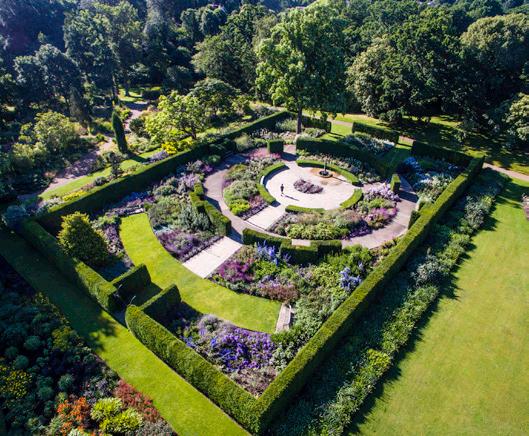
Take in the scent of the contemporary Rose Garden with its viewing platform that looks over the roses as well as the garden beyond.
No matter when you visit, the ever-changing landscape of Windsor Great Park is home to an incredible array of flora and wildlife, making it a great place to explore the beauty of the Windsor Estate.
Take a look below to see just some of the flora and wildlife that you can see right now:
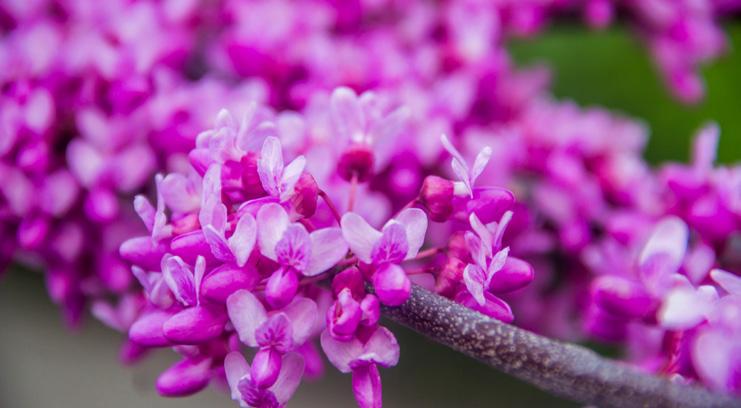
Cercis Chinensis / Chinese Redbud
Produces abundant, densely-clustered dark purplepink flowers in late spring before the leaves appear; leaves are relatively large, heart-shaped and tinted red-purple when they unfurl. This plant will provide nectar and pollen for bees and the many other types of pollinating insects.
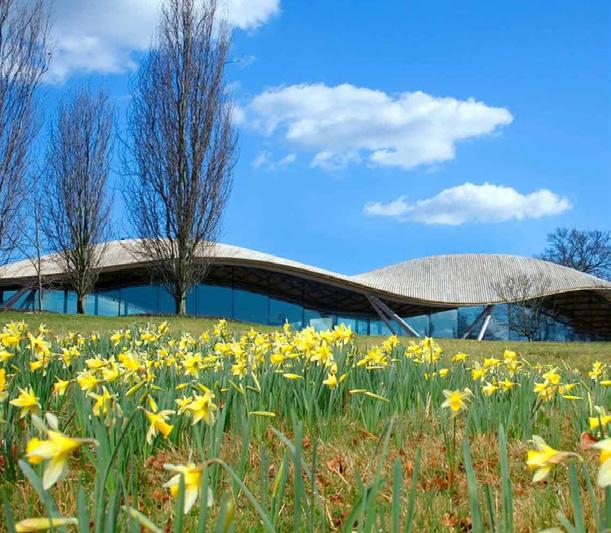
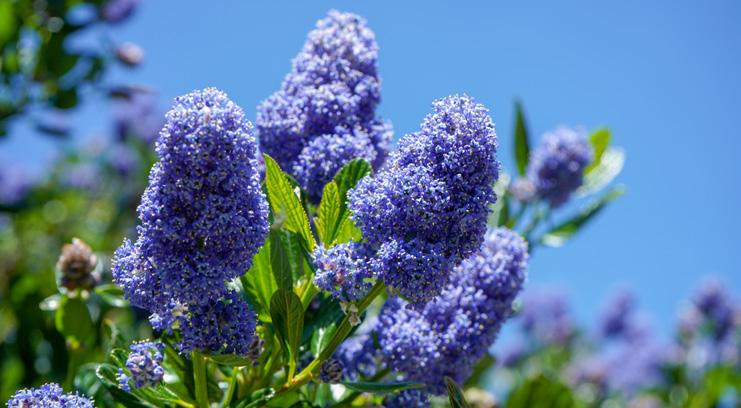
Ceanothus ‘Ray Hartman’ / California Lilac
A cultivated hybrid of Ceanothus arboreus and griseus. It originated in 1929 at the Leonard Coates Nurseries in Morgan Hill and is now widely grown in nurseries throughout California. It has dark green glossy leaves, and grows quickly to full size. Its blue flowers range from powder blue to dark blue.
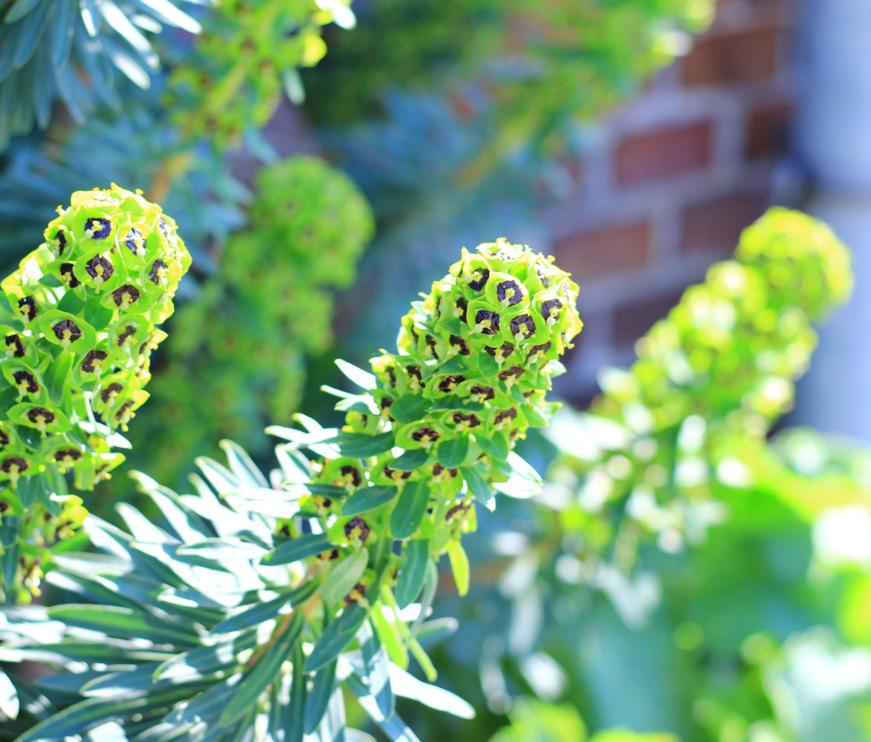
Euphorbia Characies / Mediterranean Spurge
Evergreen perennial to 1.5m, with vertical or arching biennial stems, leafy throughout at first, then bare, almost woody at the base, densely leafy above, carrying flower heads in the second year.
Slender, blue-green, rather downy leaves to 15cm long. Profuse flowers, in large, terminal, cylindrical heads in early spring have petal-like bright yellow-green bracts surrounding the tiny flowers. May be shortlived, but often self-seeds
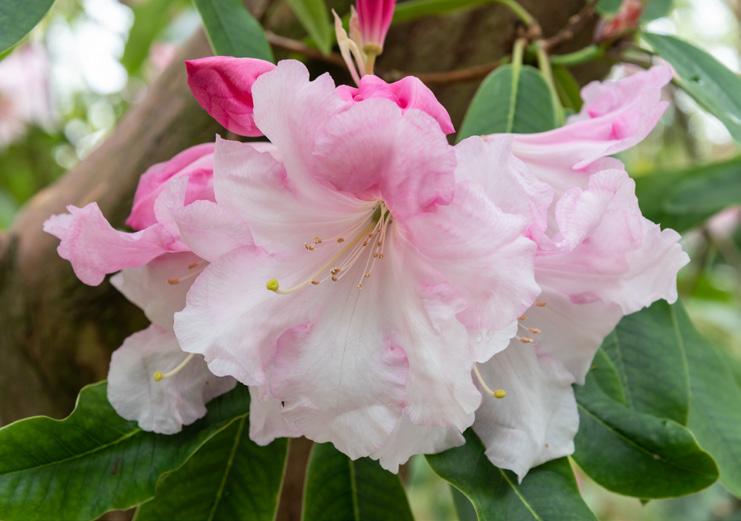
Rhododendron ‘Loderi King George’
A large evergreen shrub to 4m tall, with long, rather pale leaves, and richly-scented, white, lily-like flowers to 15cm wide, opening in tall trusses from bright pink buds in late spring and early summer.
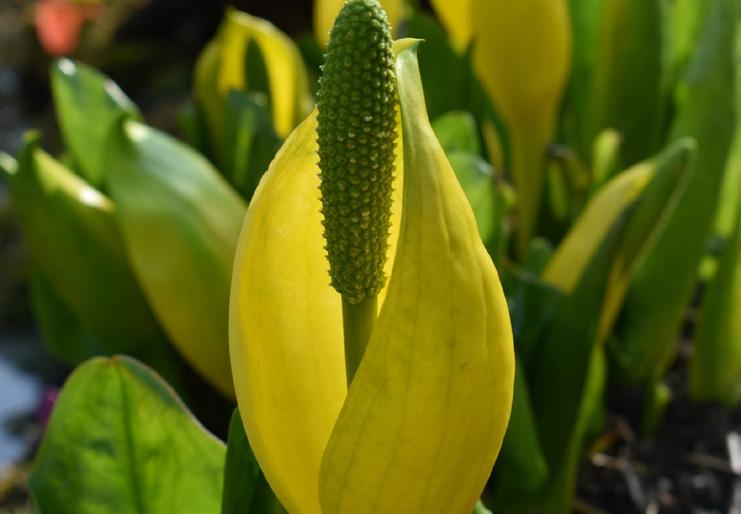
Lysichiton americanus / Yellow Skunk Cabbage
This bog arum must have deep rich mud. Then in spring it delights with its thick yellow spathes unfolding first, followed by magnificent huge leaves, making a delightful feature throughout the summer. More information can be found at windsorgreatpark.co.uk/explore/thegardens/the-savill-garden/
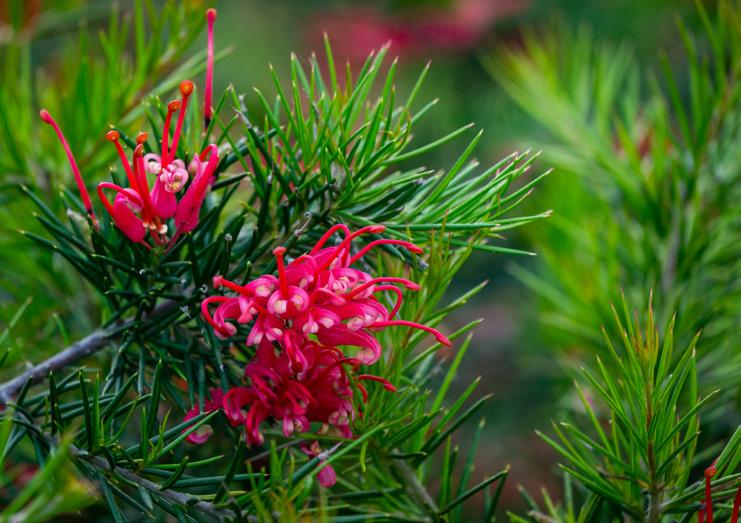
‘Canberra Gem’ / Spider flower
A medium-sized evergreen shrub of rounded habit, with rigid, linear leaves, and bright deep pink flowers in clusters from late winter to late summer. It is a stunning and hardy plant native to Australia that offers a wealth of beauty and versatility in the garden. With its intricate foliage, delicate flowers, and vibrant dark pink colour, Grevillea Canberra Gem is sure to catch the eye and make a bold statement.

